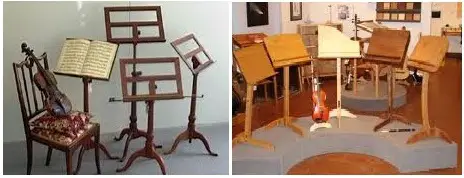
A Sheet music stand holds sheet music / music books so that you can sight read comfortably. These stands are used by various groups of musicians, orchestras, school bands and even individual musicians who rely on reading music sheets for their performances. Music stands are available in various designs and styles. Important factors to consider while buying include sturdiness, size of the desk, ease of fold and portability.
Why Use a Sheet Music Stand?
Are you one of those musicians who do not completely rely entirely on their memory for performing on stage?
- Do you refer to sheet music, lyrics or to any set list while performing?
- Do you own lots of sheets or a spiral-type sheet book?
- Do you like to refer to the sheet in a software program installed on your laptop?
If any of the above applies to you, then a music stand will definitely be an asset to you in that case.
A music stand is a equipment / music accessory that holds sheet music in a suitable position that makes it easy for the musician to read it while performing. It is used by musicians to hold sheet music, while they perform.
Most musicians play their instruments by reading from music sheets (known as sight-reading). You place your music sheets on a stand so that you can easily look at it and play the notes on your music instrument.
Unlike keyboard instruments, where the music stand (rest) is attached to the instrument, performers of other musical instruments place music sheets on a separate independent accessory, known as the music stand.
This music accessory has been in use for decades, but actually started becoming popular when the German composer’s popularity was on the rise, and people would see them using this accessory to hold their sheets.
- Related: Check out other kinds of music stands and essential music accessories
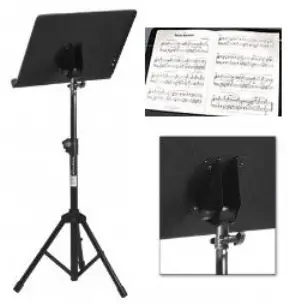
Structure of a Sheet Music Stand
A music stand has a base, shaft and the body that holds the sheet music. Depending on whether a music instrument is played in a seated or in standing position, you may get music stands of different lengths.
And almost all of them are height adjustable (barring a few wooden ones).
Though the basic structure of a stand remains more or less the same, it will have some variations depending on whether the musician plays in a seated position or in a standing or in an elevated position.
Some musicians like the conductor may need a stand with placeholder where the bow or other things like a marker or a pencil could be kept.
In terms of construction quality and finish, usually you get what you pay for.
Most beginner products do serve the purpose, but look very basic and are not sturdily built.
If you are a professional musician, you may want a solid product and also want to create a good impression; in that case you need to spend more money on your stand.
You also get accessories for these music stands.
Tray Design
Manufacturers offer a choice of tray design, suited to various situations & needs:
- Formed and lacquered natural wood in beech, ash, or hardwood
- Plastic coated steel rods: stylish yet immensely tough
- High impact resistant plastic: lightweight but strong
Wooden Designs
If you prefer wood, you have the option of customizing it to match your own style. Woodworking designs are still amazing, and you can even choose the kind of wood you want for your stand – maple, walnut, mahogany, rosewood, etc.
Sheet Music Stands: Types & Reviews
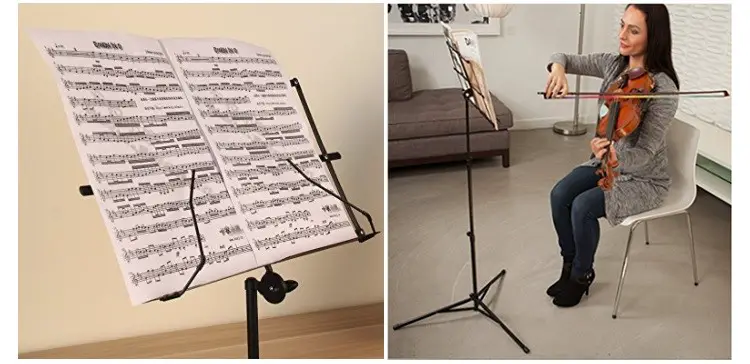 Metal Music Stands: Most entry level music stands are made of metal. These are inexpensive and functional; these may not be the most elegant ones but they do the job.
Metal Music Stands: Most entry level music stands are made of metal. These are inexpensive and functional; these may not be the most elegant ones but they do the job.
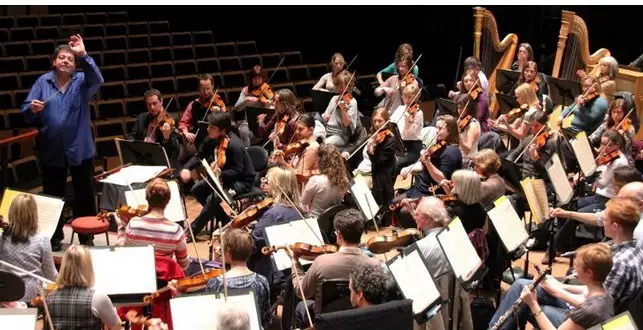 Orchestral music stands: An orchestral music stand is sturdier, features a wider desk, and provides a stable and adjustable platform. It is commonly used by musicians in orchestras or other musical ensembles to hold their sheet music while performing.
Orchestral music stands: An orchestral music stand is sturdier, features a wider desk, and provides a stable and adjustable platform. It is commonly used by musicians in orchestras or other musical ensembles to hold their sheet music while performing.
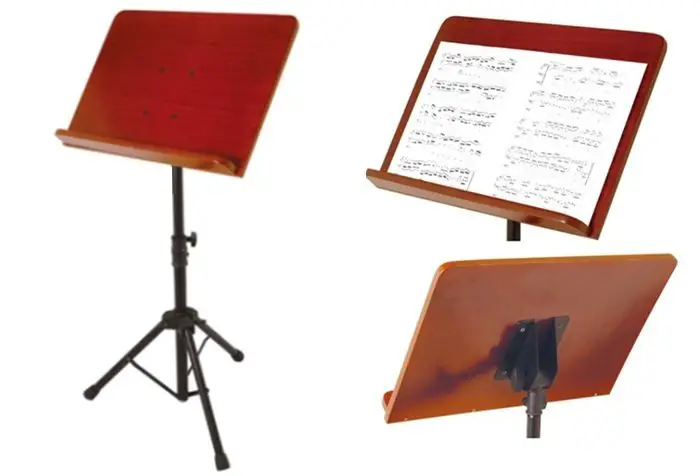 Wooden Music Stands: These are made of wood, look elegant, and are sturdier/heavier compared to the metal wire stands. Many orchestral stands are made of wood.
Wooden Music Stands: These are made of wood, look elegant, and are sturdier/heavier compared to the metal wire stands. Many orchestral stands are made of wood.
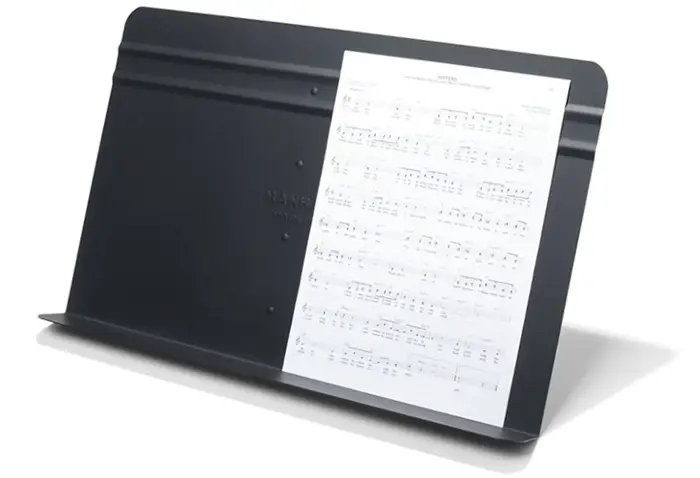 Tabletop sheet music stand: Tabletop music stands are portable and are designed to be placed on flat surfaces. You may use it to place sheet music, book, tablet, laptop.
Tabletop sheet music stand: Tabletop music stands are portable and are designed to be placed on flat surfaces. You may use it to place sheet music, book, tablet, laptop.
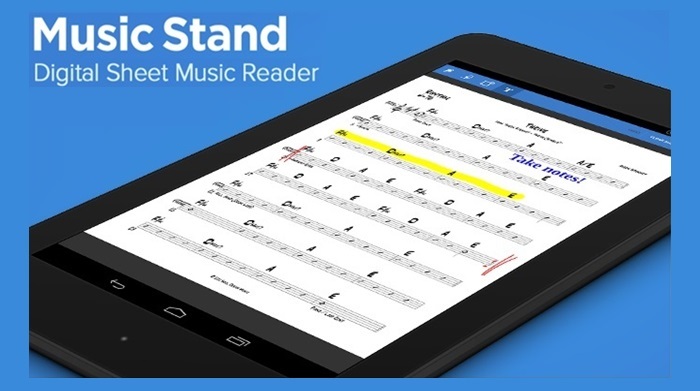 Digital Music Stand: A digital music stand is the digital version of traditional paper sheet music. It is an electronic device that displays sheet music or musical scores. Being a digital device, you can easily do adjustments such as zoom in, highlight specific sections, adjust lighting, and so on.
Digital Music Stand: A digital music stand is the digital version of traditional paper sheet music. It is an electronic device that displays sheet music or musical scores. Being a digital device, you can easily do adjustments such as zoom in, highlight specific sections, adjust lighting, and so on.
Brass Music Stands: You also get stands made of brass. Brass music stands look elegant and have a decorative appearance and offer aesthetic appeal.
Best Sheet Music Stands & Accessories
Checkout reviews of the best sheet music stand. Some of these look stylish, goes with the image of a professional/classical musician (especially the ones made of wood, which are aesthetically pleasing to the eyes).
Music Stand Parts & Accessories
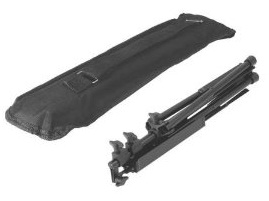 Music Stand Accessories are available to help you get the most out of your stand. Some of these include:
Music Stand Accessories are available to help you get the most out of your stand. Some of these include:
- Music stand lamp which clamps to the back of the tray
- Instrument tray which clamps to the bottom of the music tray
- An instrument shelf which clamps to the stem, to keep useful items
You can even buy replacement parts of the music stand, such as a finger clutch to support more weight.
For example, you can buy a new and stronger shaft for your music stand that can hold more weight, or you can buy a good Lock for your shaft rather than replace the entire shaft. These options will make your music stand sturdier.
Read more on sheet music stand: parts & accessories
Sheet Music Stands: Detailed Guide
Over the years, various types of music stands have been produced, keeping in mind the comfort and convenience of the performers, and also to make them suitable under various conditions.
Most modern type of stands are made of metal, they are lightweight, does the job and can be quite affordable. They can also be easily folded for easy transportation.
You also have the option of wooden stands, which can look quite elegant, are robust, and act as perfect furniture as well.
You also have option of smaller stands, also known as lyre that can be attached to the music instrument itself. You’ll find them commonly used in most marching bands.
The most recent addition to this list includes Digital music stands, which come with automated page turning feature, and is used by several professional musicians.

Different Forms
Music orchestras have a lot of musicians that play different kinds of instruments. These instruments demand a stand of variable height, as some musicians perform in seated position whereas there are musicians who perform in a standing position as well.
So the demands are different for the different musicians when it comes to stands.
Seated Musicians
Most stands are height-adjustable, but even among them there are the taller and the shorter versions. When we talk about seated musicians, these include musicians who play in stage bands. Other musicians include guitarists, cellists, and chamber ensemble musicians.
Standing Musicians
There are several musicians who play in a standing position or on elevated platforms so it is important for them to go in for the taller sheet music stands. Musicians who play the Upright Bass, Violin/Cello, Trumpet, Horn or other woodwind instruments will fall in this category.
Music Conductor/Director
Some musicians like the Conductor/Director will always perform in a standing position.
They may also require a small storage area to keep markers, pencils, reeds, in addition to their bow. For them a sheet music stand with double lip will be more suitable.
As you see, a sheet music stand can come in various sizes and forms depending on who is going to use it. In addition, you also have the option of going in for a metal make or a wooden stand. Both are widely used but wooden stands give you the added advantage of having handcrafted designs and decorations.
Most individual performers, younger-aged musicians & enthusiasts prefer wooden Sheet Music Stand!
Opera Music Stands
When it comes to music stands, Orchestra musicians and soloists require a stand that allows flexibility of position, can be quickly adjusted, makes as less noise as possible. Stackability, weight and sturdiness of these music stands are second to none.
That is why opera music stands cater to the most exacting specifications for musicians playing in concert halls, music halls and theaters.
Concert Music Stands
These stands look beautiful, are usually made of natural wood (and slender, polished metal), designed to look beautiful next to your fine instruments, and also perfectly compliments the visual character of both modern and historic concert halls. You’ll be proud to play a concert music stand on the stage!
Utmost care is taken to make the base with large rubber feet which will neither damage the floor when pulled across it, nor make a noise when the stand is knocked.
A Concert Music Stand is a highly robust, professional quality music stand, ideal for concert halls and studios as well as in music rehearsal rooms and schools.

Checkout these Bestselling Sheet Music Stands here…
Music Stand vs Music Desk
So is there any difference between these, or are they the same?
Basically, any inclined surface that can be used for supporting music can be considered a music stand, but then a stand has a shaft that can be height-adjusted whereas a music desk has a tilt-able support for the music sheets, but rather than being raised on a stand, it forms part of a table.
A music desk is suited more in a classroom with several students where it may not be possible to have several music stands (space constraint). A desk can also be used for keeping books, and for reading or writing.
Perfect for Holding Sheets / Books
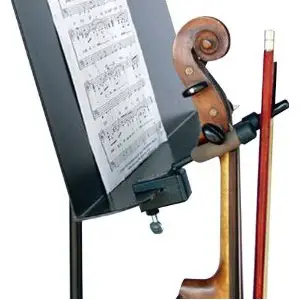
Serious musicians over the years can have lots of sheet music, books that has most of the songs that they have mastered. And many prefer to have the written music in front of their eyes while performing.
Music stands are the perfect accessories for such tasks.
There are many who even use these to keep their iPad or Laptop and refer to the digital format of the sheets while performing, especially at home or in the studio.
Features of a Sheet Music Stand:
Varying Height
In terms of choices, though the basic structure of these music accessories are the same, depending on the musician and the musical instrument, these could have varying heights.
Though some of these height-adjustable certain musical instruments require the musician to be seated whereas certain others have to be performed in the standing position. So according the height also differs.
Varying Purposes
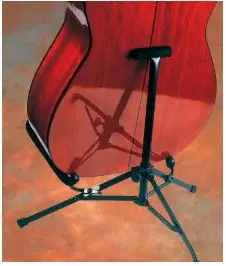
Not all of these stands are meant to be used as sheet music stand. An instrument stand is available to rest your musical instrument, when you are not playing.
Keeping it inside a bag and removing it, every-time you want to play, can be cumbersome. So these stands are used to support or hang your instrument once you are done with your practice.
And every-time you feel like playing, just grab it from the stand and start playing!
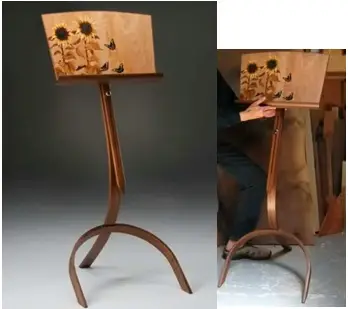
Different Styles / Materials
Most music accessories are usually made of metal or wood, and the same choices are available in this case as well.
Metal and wooden music stands are quite popular.
Most beginners usually go in for metal ones as you do get more affordable options in this case. Wooden ones, on the other hand, can have better designs and are more elegant, and so it can be a bit expensive.
Needs to be Foldable
A wooden folding music stand on the other hand may not offer that flexibility, not all of them at least. You will definitely have the height adjustability but the tripod may not be foldable. Wooden stands are quite sturdy and heavy duty, so only some of them give you that option of being foldable.
For some, this can be quite important factor in deciding what music stand to buy. If a folding music stand does not let you fold the feet / tripod then it becomes a challenge at times to pack it in your vehicle along with other instruments.
Read: How to assemble folding music stand
Needs to be Portable Yet sturdy
A portable music stand is something that every performing musician desires. Be it for gigs, rehearsals, practice or concert, a portable and easy-to-use stand is preferable.
A light weight music stand that is easy to carry is definitely handy, but definitely not at the expense of being unstable.
Most beginners will, at the most, keep a book or a few pages of sheet music on the stand. And most inexpensive music stand – wood or metal, will do a good job of that.
However, an experienced musician, music instructor or a band director will keep heavy books of sheet music (or a laptop), and the stands should be sturdy enough to hold them. You don’t want a situation where the stand comes down in the middle of your performance.
Most musicians would be happy if they could raise and lower the stand with just one hand. So, while portability is important, so are other factors like sturdiness and being lightweight. Make sure you keep those in mind.

The major users of these music accessories include schools with a considerable music department and curriculum, symphonies & orchestras worldwide.
So what do the experienced performers look for in this accessory?
Here are the most desired features:
- It needs to be lightweight, but sturdy and durable, and should be secure at any height
- It should be easy to change the height, preferably with one hand.
- The better ones come with powder coated, textured finish that resists scratches
- Smooth but heavy-duty chrome finish inner shaft that provides one-hand friction grip
- Heavy-gauge, all-steel welded base provides excellent stability and requires minimum space on stage risers or in storage
How to Setup and Use a Stand Correctly
Music stands can be easily assembled as well as broken down which makes it easy to carry these stands around (to gigs or some music venue).
Music stands contain multiple components that need to be assembled; you can go through the instructions on how to set them up, so that you’re not lost (these are however not very complex to setup).
Read: How to assemble a music stand.
Here’s video that shows a kid struggling to setup a stand:
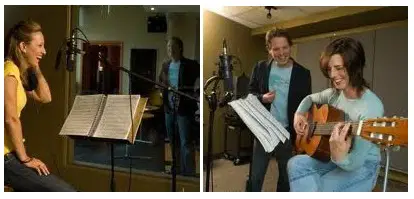
Here’s how musicians use their music stand:
- The height of the sheets on the stand should be lower than your eye level, the same way you would see a computer screen.
- Most musicians place the music stand on their left side
So what is the appropriate height at which a music stand should be adjusted?
There’s no hard-and-fast rule to this. It depends on the instrument being played, and also the height of the person.
Though most music stands are adjustable, they still cater to certain instruments depending on whether the instrument is played in the sated position or in the standing position.
Here’s how to be comfortable using a stand, in order to get the best experience out of it.
- Adjust the stand to the desired height to suit your style of playing
- Most stands also lets you adjust the tilt/angle of the main plate, so make use of that feature
- Don’t place the stand such that it blocks your view of other musicians, or the audience.
- In case the stand is not height-adjustable, you may have to use a bench/stool of the right height.
- Always carry a stand light to the venue, so that there’s enough light for you to read the sheet music / lyrics.
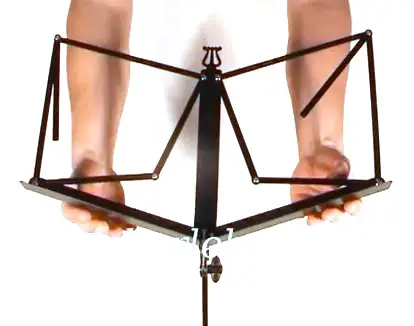 Here’s how to open a music stand correctly to prevent damaging it.
Here’s how to open a music stand correctly to prevent damaging it.
Most music stands nowadays, especially the metal ones, are fold-able which makes them more compact & portable.
This is obviously a good thing as almost everyone needs a music accessory that is lightweight and can be carried along with ease, if required. You can also just fold it and keep it away in some corner, when not in use.
But then, the design may look a bit complicated at first (especially the cheaper ones that offer lots of features) and opening some of them can really be a challenge.
And you need to be careful with these, as you can potentially damage them if you try to apply lot of force.
You can always look at the instructions that come along with the accessory, but it case you don’t have one here’s a video that you must watch.
Here’s a nice demonstration on how to open a music stand with a folding desk in the correct order.
With music stands, you’re less likely to break it by opening it wrongly; however it can suffer damage if it topples.
How to Manage Lengthy Sheet Score on Music Stand?
Almost every serious music student has faced this problem of managing the sheets for lengthy pieces. Sheet music of certain pieces can run into pages. Here are some tips on how to manage lengthy music sheet scores on your Music Stand.
Practical Problems
If you have been learning to play your musical instrument for some time now, you would have realized by now that some of the music can be quite lengthy.
The common issues that one faces in such cases are:
- Limited space on the stand
- Finding a good place to turn the page
- Outside sheets go backward
All this makes it quite frustrating when you are learning to play that particular piece.
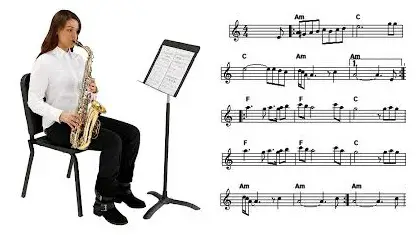
Use Two Stands
The easiest, but an expensive option, is to use two music stands next to each other. Though this may not seem like an attractive option to beginners, most experienced music players do make use of a couple of music stands to play.
It might take more space, and look as if you’re showing-off, but the fact is that it can really reduce your stress about flipping the page.
Ask a Friend
Another good option is to ask one of your friends to help you out during your performances. Ask one of your fellow musicians to turn the pages for you, especially when you are going for competitions.
You’ll have to work out some signal to communicate, that will decide when to turn the pages. Usually, the nod of the head works best, as your hands would be tied up and you don’t want to speak in the middle of the performance. So the nod of the head works best.
It would be better to have somebody who enjoys music and can sight read, to help you out, so that he/she would have some idea of where you’re on the sheet.
You don’t want someone who is totally clueless of where you are, so that both off you can be relaxed when the performance is on.
Use a Music Notation Software
Most musicians do use tablets / notebooks nowadays during their performances.
You may use notation software such as Sibelius, Score or Finale to copy all your work. Try using a longer paper and use smaller font so that you can accommodate much more in one screen.
Find a Good Place to Halt
In case you decide not to use two music stands, you need to find a good place where you can rest, and flip.
Try to find a place where your part is not in play or important, that is the place where you can stop and flip the page.
You may even hand-write a few bars at the bottom of the page, just before the next “rest” comes in to play.
So, if you need to flip between page 2 & 3, and if the next break is after a few bars, then write down those bars of music on the bottom of page 2, until you hit the next rest. Doing this gives you an opportunity to flip the page.
Use a Cardboard
This is another option, in case you do now want to use two music stands. Use a bigger cardboard and tape the music to it; you can then place it on the music stand. Not a neat solution, but it works!
You can be innovative and use some other material similar to cardboard, but I guess you get the idea now.
How to Prevent the Sheets from Falling Off the Music Stand?
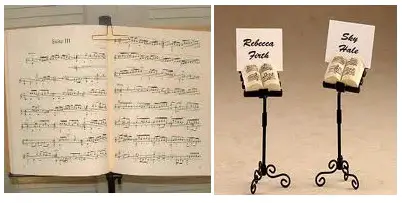 If you have been sight-reading for a decent period of time, I’m sure you would have experienced some practical problems when keeping the sheet music on the stand.
If you have been sight-reading for a decent period of time, I’m sure you would have experienced some practical problems when keeping the sheet music on the stand.
This is true if the music stand has a much bigger bookplate.
One of the most common problems is:
- How to keep the sheet music from falling off the music stand
If you have just one page or a few pages, at times, it just doesn’t seem to stay on the music stand. Obviously, that makes you lose focus as you have to constantly adjust the sheet on the stand.
Here are a few suggestions that you can consider.
Making the Sheets stay in Place
Most music students have this problem, especially if they are printing the music straight off the computer.
Here are some things that you could do to solve this problem.
- Use Pegs: Easiest thing is to tape them together and use clothes peg (the ones that we use for hanging the clothes) to hold them to the stand. Again, depending on the size of the sheet, this may or may not be effective but for most purposes it does a fine job.
- Use Paper Clips: If you have some at home, you can definitely use these to clip the printed sheets directly or to the pages of any book, and you should be fine.
- Use a Binder: Another option is to keep the sheets in a binder, preferably with plastic sleeves. It is easier to keep these binders on the stand. And may be, use a post-it flag that will make it easier for you to turn the pages between the various sections of the music.
To Conclude
Music stands nowadays are available in various shapes and sizes, and is essential — be it in the studio, stage pit or when performing for huge audiences. Stands can be made of wood with different inlays or intricate wood work, or can be made of metal (brass or aluminum); the modern design ensures that these will look good in your room, stage, or even in your studio/office. When choosing a stand, select the appropriate style (large or small, think or thin, lightweight or heavy) and something that meets your requirements (portability, height-adjustment). With a variety of music stands available, we hope you’ll find the perfect sheet music stand for your needs, that will last for years to come.
Ben took formal violin lessons for 10 years when he was in school; he writes on violin and other string instruments, and contributes towards the growth of this site. Read more here.



Leave a Reply